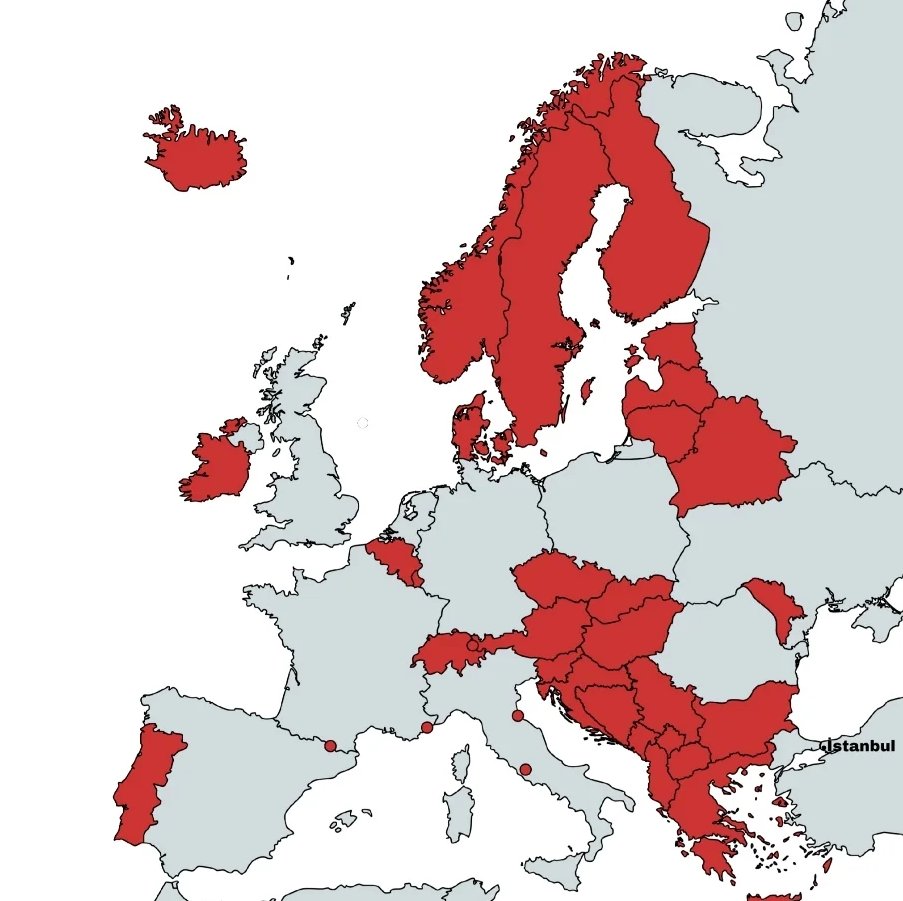
Looking at this striking map of Europe, the countries highlighted in red share a remarkable characteristic: each one has fewer residents than the single city of Istanbul, Turkey.
It’s a demographic reality that puts into perspective just how massive some urban centers have become compared to entire nations.
The Istanbul Giant
Istanbul’s metropolitan area is home to approximately 16 million people as of 2024, making it one of the world’s largest urban centers.
To put this in American terms, that’s roughly equivalent to the combined populations of New York City, Los Angeles, Chicago, and Houston. But this bustling metropolis actually surpasses the population of 131 countries worldwide, and as this map demonstrates, many of those countries are in Europe.
Europe’s Smaller Nations
The countries shaded in red on this map represent a fascinating mix of European nations, from Nordic countries like Norway and Finland to island nations like Ireland and Iceland, and smaller Central European states.
At the smallest end of the European spectrum, Malta has just 563,000 residents, Luxembourg has 672,000, and Cyprus has 934,000.
Even some countries that might seem substantial are dwarfed by Istanbul’s massive population. Countries like Denmark, Finland, and Norway each have populations well under 10 million, putting them clearly in Istanbul’s shadow demographically.
What This Means for Europe
This population comparison highlights the incredible diversity in European demographics. While countries like Germany, France, and the United Kingdom have populations exceeding 60 million, much of Europe consists of smaller nations that prioritize quality of life and efficient governance over sheer numbers.
The contrast also illustrates the urbanization trend that’s reshaping demographics worldwide. Istanbul represents the kind of mega-city growth that’s becoming increasingly common, particularly in developing regions, while many European countries maintain more distributed population patterns across multiple cities and rural areas.
The Broader Picture
Istanbul has grown from just 1 million residents in the 1950s to about 10 million in the city proper, with nearly 200,000 new immigrants arriving each year. This explosive growth story contrasts sharply with many European countries that are experiencing stable or even declining birth rates.
The next time you hear about Istanbul in the news, remember that you’re hearing about an urban area with more residents than Norway, Ireland, and dozens of other European countries combined. It’s a reminder of how dramatically different population scales can be, even within the same continent.
Help us out by sharing this map: